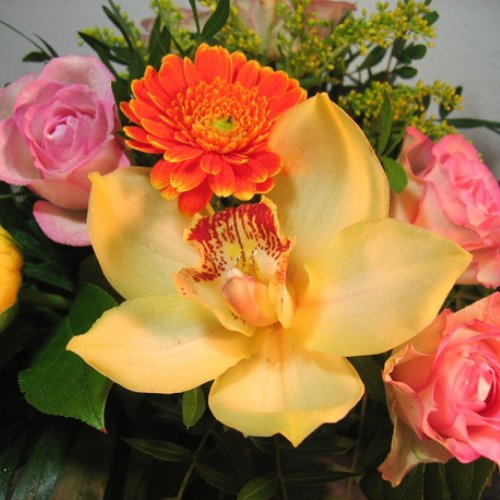Flowers Quiz: Guess the Flower in the Picture

Free online printable quiz with multiple-choice questions (MCQ) without registration.
Spring is coming in great strides. Snow melts, streams flow, and snowdrops raise their bright heads to the sun. And soon it will be summer, and in the fields will bloom magnificent in their simplicity flowers. Among them will be a lot of daisies, but today we will talk not only about them, and quite different flowering plants, most of which can be called a field.
The Flowers Quiz with pictures and hints, which we offer you to take today, consists of very interesting questions of different complexity. We believe that you can do it. Or learn something new for yourself. Let's go!
Right answers
Found error? Select and press Ctrl+Enter
1. This plant is also called granny's bonnet. It blooms with beautiful flowers, blue, pink, purple, red or white.
aquilegia
2. The stems of this plant are used to make fiber, which is used to weave cloth for clothing.
linum
3. The juice of this plant contains toxic substances that can cause burns if they come in contact with human skin.
celandine
4. This plant is used in the treatment of colds. A placebo-controlled study has shown that the use of this plant in the early stages of the disease alleviates it.
echinacea
5. The flowers of this plant dye the wool orange-red color. This plant is also widely used in folk and traditional medicine in the treatment of colds and other respiratory diseases.
oregano
6. This plant is found throughout Europe on forest edges and in brushwood.
veronica chamaedrys
7. The underside of the leaves of this plant is covered with soft hairs, while the upper side is smooth. Because of this feature, it got its Russian name.
coltsfoot
8. This flowering plant can be used in cooking instead of yeast.
inula
9. This plant, like most members of the Buttercup family, is poisonous.
snowdrop windflower
10. 0|mint
valerian
11. The roots of this flowering plant make a red dye, and the leaves can be used to make soup or salad.
comfrey
12. The seeds of this plant are poisonous if eaten in large quantities. Symptoms are similar to mild poisoning by hydrocyanic acid.
vicia cracca (tufted vetch, cow vetch, bird vetch)
13. This plant can be used for insecticides, essential oils and medicines. It has a rather pungent odor.
tansy
14. This plant can also be used as a spice, but you have to be careful as large amounts can cause poisoning.
yarrow
15. The dried and roasted roots of this plant are used as a coffee substitute.
chicory
16. Its scientific name is Matricaria, which is Latin for "mother herb." It is a ...
Chamomile





